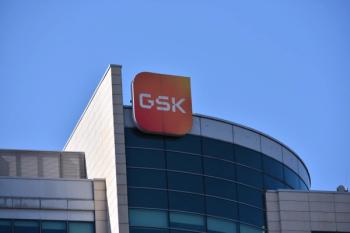
- BioPharm International-10-01-2010
- Volume 23
- Issue 10
Uncertain Outlook for Biopharma Venture Capital
Venture capital is still scarce for early biotechs and their providers.
Venture capital (VC) is the lifeblood of biopharmaceutical companies and, by extension, of the contract research and manufacturing organizations (CROs and CMOs) that conduct much of their drug development activity. Nearly 80% of every VC dollar invested in an early-stage biopharmaceutical company goes into research and development (R&D, the rest goes to overhead and capital expenditure) and most of that R&D expenditure goes to CROs and CMOs.
Jim Miller
The most recent news on VC investing in biopharma has been very encouraging. According to data reported by the National Venture Capital Association, VC investing in biopharma in the US topped $2 billion in the first half of 2010, a 33% jump from the $1.5 billion recorded in the first half of 2009. The $2 billion first-half investment comes within 10% of the best years of the last decade when funding flowed like water to biopharmaceutical companies.
Especially encouraging was the news that first-time venture support for new companies jumped sharply. The number of biotech companies receiving VC financing for the first time jumped to 41 in the second quarter of 2010, up from 27 in the first quarter and the highest number in the past seven years, at least. The $208 million invested in those 41 companies (an average of $5.1 million per company) is the largest amount of first- time VC funding since the fourth quarter of 2007.
Figure 1. First-time venture capital investments in bio/pharmaceutical companies (quarterly, 2007â2010)
In our "Follow the Money" research program, PharmSource has found that for early-stage companies receiving relatively small infusions of capital, 75–80% of the funding goes into R&D, split almost equally between discovery research and early development activities. That suggests that the first-half funding will put $160 million into R&D spending in the next 12–18 months, most of which will be outsourced.
LATE-STAGE BIAS
The good overall performance for VC investing this year, however, masks a problematic underlying trend. Investments have been flowing primarily to late-stage companies with development candidates close to out-licensing or commercialization. "The exit opportunities are better for assets that are more mature," says Bryant Fong, managing director at the San Francisco-based investment firm Burrill & Company. Late-stage candidates are less risky from a clinical sense (because they have passed initial toxicology and efficacy screens) and promise a financial return much sooner than early-stage candidates.
According to David Mott, general partner at New Enterprise Associates, the real problem area for biopharma venture investing has been companies in early development, i.e., preclinical and Phase 1. Those companies are in a difficult spot: They are farther from being able to cash in than companies with late-stage candidates and face greater risk because they have not yet achieved proof of concept. At the same time, their expenditures are rising as they move into the regulated development space (i.e., development that must be done under GLP, GCP, or GMP). These companies have had problems raising money and CMOs report that order activity from them remains slow.
According to Mott, a big problem for these early-stage companies is valuation. In the current financial environment, potential new investors are placing a value on these companies that is much lower than the amount that previous rounds of investors have put into the companies. The earlier investors are often unwilling to see their stake in the company diluted, and are putting up more of the needed funds themselves rather than letting in new investors. This usually means the companies are getting less new investment than they otherwise might, and that VC firms have less money to invest in new companies.
Interestingly, Mott suggests that it is easier to invest in the earliest-stage companies. Those companies don't have preexisting investors, so the contentious valuation issues are not present. Further, although those companies are the most risky, they also need smaller amounts of funding for their discovery activities.
CONTINUING CHALLENGES
Venture investing faces a number of hurdles going forward. The generally high level of risk aversion and preference for liquidity (i.e., early exits) among investors will continue to favor investments in late-stage biopharmaceutical companies. Further, the availability of funds for venture investing is declining as the historically low returns of the past decade have made pension funds and university endowments less willing to invest in venture funds.
VC funds also point to the uncertainty in the broader regulatory and healthcare environment as a big problem for venture investing. The FDA's stiffening stance on safety risk and efficacy has made it harder to get new drugs approved, lowering the chance of a profitable return. Further, the ultimate impact of healthcare reform and efforts by private companies to manage healthcare costs, add another layer of risk.
The trends in venture investing have major implications for the contract services industry. As the large global bio/pharmaceutical companies concentrate their outsourced spending in the hands of a few large CROs, the small and mid-size CROs are becoming more dependent on smaller biopharmaceutical companies for new business. Given the uncertain funding situation, this is leading to a highly competitive situation in which more firms are fighting over a pool of business that at worst may be shrinking, and at best is highly volatile. In contrast to the free-flowing venture capital environment of the last decade, when many start-up CROs and CMOs found it easy to enter the business, the current environment has led to an industry shakeout, characterized by mergers of smaller firms and outright business failures.
Jim Miller is president of PharmSource Information Services, Inc., Springfield, VA, 703.383.4903,
Articles in this issue
over 15 years ago
BioPharm International, October 2010 Issue (PDF)over 15 years ago
Biopharmacetiucal Approval Trends in 2009over 15 years ago
A Quality Culture Can Be the Industry's Core Strengthover 15 years ago
Taking on the Challengesover 15 years ago
Biotech Cools Off as Capital Markets Weakenover 15 years ago
The Role of Noncritical Process Parameters in Quality by DesignNewsletter
Stay at the forefront of biopharmaceutical innovation—subscribe to BioPharm International for expert insights on drug development, manufacturing, compliance, and more.




